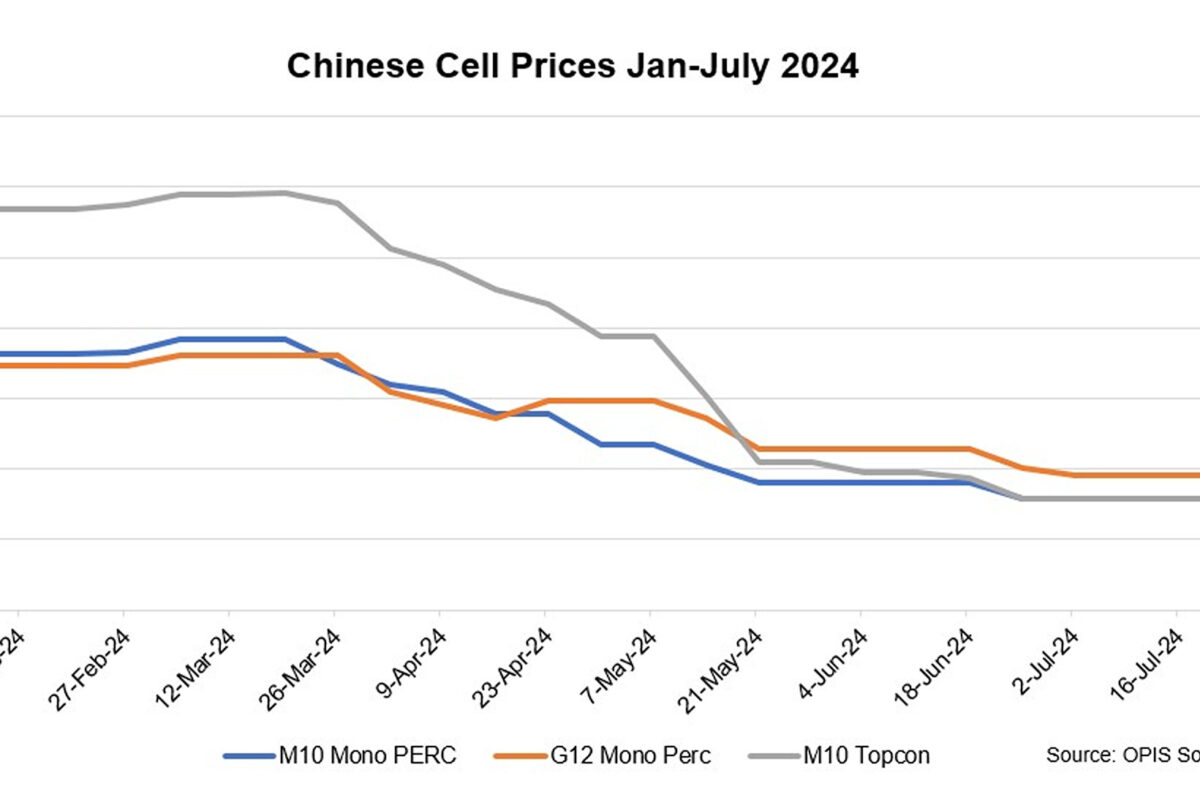Conceived by scientists in Japan, the system consists of a a xenon flash lighting system and a detector capacitor. It can reportedly examine solar modules and find the degraded ones without disconnecting the string’s electrical wiring.
Researchers from Japan’s Ibaraki University and the University of Shiga Prefecture have developed a novel deterioration diagnosis device for PV modules that can reportedly inspect a string of cells and spot the deterioration in each individual module without disconnecting the string’s electrical wiring.
“Detection of deterioration of individual PV modules can minimize the number of PV modules requiring replacement and makes economically beneficial long-term operation of commercial PV power generation plants possible,” said the academics. “In addition, it also contributes to reduction of waste PV modules and effective use of resources.”
The novel solution uses a Xenon flash lighting system to provide flash light irradiation on a target module, which is connected to a detector capacitor. The measured charging voltage value of the detector capacitor is used as the decision index voltage for the presence of deterioration.
“When only two or three PV modules are connected in series in a solar cell string, the decision index voltage is sufficiently high and almost the same as for the case of a single separated PV module,” explained the team. “However, unfortunately the decision index voltage was revealed to decrease overall as the number of series-connected PV modules increases. This voltage reduction makes accurate deterioration diagnosis of individual PV modules difficult, since it makes the difference between decision index voltages in the non-deteriorated and deteriorated PV module cases slight.”
To solve this problem, the academics added to the device a unique auxiliary diode network. This network consists of many diodes and enables the isolation of a single device without disconnecting it, ensuring that the measured current is coming only from the relevant module. “This connection can be easily completed in the junction box of the solar cell string by preparing preliminary electrical wiring from the output terminal of each PV module in the solar cell string to the junction box,” they highlighted.
Before building an experimental setup of the system, the team numerically simulated it using the PSIM software. “It was made clear from the simulation calculations with the auxiliary diode network inserted that high decision index voltages are generally obtained and the voltages for different deterioration conditions can be clearly distinguished from each other,” it further explained. “In contrast, the decision index voltages obtained for the simulation model without the auxiliary diode network inserted drop overall in comparison.”
Following the positive results of the simulation, the scientist created a prototype experimental setup. It included eight PV modules with a nominal output power of 30 W connected in a string and a ceramic resistor set to 0.5 Ω attached to one of them to simulate degradation of 5%. In addition, the setup comprised a detector capacitor, a lighting period synchronous switch, a reset switch, a reset resistor, and an auxiliary diode network.
“The detection tests were performed for the case where one 5% degraded PV module was mixed into the other non-deteriorated PV modules,” the scientists said. “It was revealed that the obtained decision index voltage decreases only when the 5% degraded PV module is inspected by selecting it as the diagnosis target, and the 5% degraded PV module can be clearly distinguished from the other non-deteriorated PV modules by the significant voltage difference compared to normal.”
The new device was presented in “Novel deterioration diagnosis device for individual photovoltaic modules usable without disconnecting electric wiring in solar cell string,” published in Renewable Energy.
This content is protected by copyright and may not be reused. If you want to cooperate with us and would like to reuse some of our content, please contact: [email protected].
